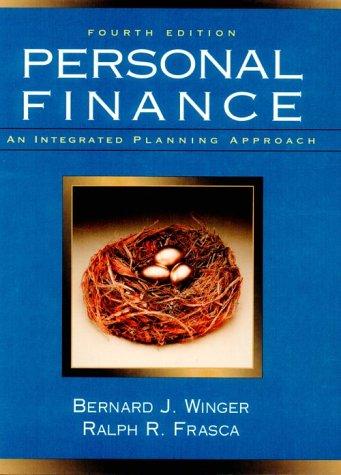Question
Brothers S and M have long disagreed about the optimal capital structure of firm SEI, a NY-based publicly-traded firm that generates perpetual free cash flows
Brothers S and M have long disagreed about the optimal capital structure of firm SEI, a NY-based publicly-traded firm that generates perpetual free cash flows of $36m per year. S and M own equity in SEI. S, who tends to favor aggressive policies, has long argued that the firm should lever up to achieve higher returns on equity. M, in contrast, has been an unrelenting defender of the current zero-debt policy of the firm. In this question, assume that all the assumptions of the Modigliani-Miller theorems (no taxes, no costs of financial distress, no transaction costs, etc.) hold. Also, assume that the prevailing riskfree rate is 4% at all maturities (EAR), that the expected return on the market portfolio is 9%, and that the CAPM holds.
(a) If SEI is currently 100% equity financed and has an equity beta of 1.2, what is the expected return on SEI' s equity? What is SEI' s WACC? What is SEI' s firm value?
(b) If S convinces the CEO of SEI to lever up to a debt/equity ratio of 2/1 using risk-free debt, what is the new expected return on SEI' s equity? What is SEI' s WACC? What is SEI' s firm value?
(c) Upon graduation, you join Bessemer Trust, a NY-based wealth management and investment advisory firm. Brothers S and M are your first clients. In your first conversation with them, you learn that both are upset: SEI has decided to ignore their individual preferences and settled for a debt/equity ratio of 1. The debt issued is risk-free, and the leverage ratio is expected to remain constant forever.
S seeks your advice. He is interested in finding a way to obtain the same payoffs and expected returns as those that he would have obtained if SEI had chosen his preferred debt/equity ratio of 2/1. Which portfolio of SEI stock and risk-free bonds would achieve this goal? Explain whether he needs to buy or sell stock and whether he needs to buy or sell bonds to achieve his preferred payoffs and expected return. To achieve his preferred payoffs and expected return, does S need to borrow money at the risk-free rate (sell bonds) to invest in SEI stock?
(d) M also seeks your advice. He is interested in finding a way to obtain the same payoffs and expected returns as those that he would have obtained if SEI had maintained his preferred zero-debt policy. Which portfolio of SEI stock and risk-free bonds would achieve this goal? Explain whether he needs to buy or sell stock and whether he needs to buy or sell bonds to achieve his preferred payoffs and expected return. To achieve his preferred payoffs and expected return, does M need to sell SEI stock and buy bonds?
Step by Step Solution
There are 3 Steps involved in it
Step: 1

Get Instant Access to Expert-Tailored Solutions
See step-by-step solutions with expert insights and AI powered tools for academic success
Step: 2

Step: 3

Ace Your Homework with AI
Get the answers you need in no time with our AI-driven, step-by-step assistance
Get Started


